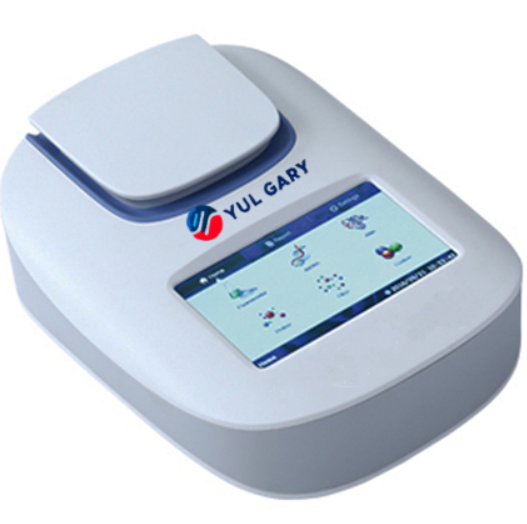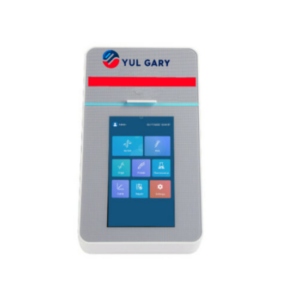Description
The Fluorometer YG1689-A is an advanced benchtop instrument designed primarily for ultra-sensitive nucleic acid and protein quantification, playing an essential role in molecular biology, genomics, and environmental science. Its compact design coupled with a user-friendly 4.3-inch touchscreen interface provides ease of use, delivering accurate results in as quick as 3 seconds. With an exceptional detection limit of 0.5 pg/μL for DNA, this device utilizes dual fluorescence channels, enabling simultaneous analysis of DNA/RNA and protein. Thanks to its versatile open system design, it accommodates a variety of reagents, making it both adaptable and convenient for researchers.
Market Price
The Fluorometer YG1689-A is competitively priced within the spectrum of high-end laboratory equipment, providing optimal sensitivity and reliability. The price range for this type of product typically falls between $2,200 and $3,000 USD, reflecting its considerable value in enhancing analytical capabilities in research environments.
Frequently Asked Questions
-
How is this fluorometer different from absorbance-based systems?
The YG1689-A operates by measuring fluorescence intensity as opposed to absorbance, offering improved sensitivity and accuracy, particularly for low-concentration samples. -
Can I use different reagents with this instrument?
Yes, it supports an open system design that allows the use of numerous quantitation kits and reagents, providing flexibility to users. -
Does the device support data export?
Absolutely. It can store up to 1,000 measurements and features a convenient USB export function for seamless integration into lab information systems.
Advantages and Disadvantages
Advantages:
- Provides high sensitivity with a DNA detection limit of 0.5 pg/μL, ideal for low-level quantification.
- Dual-channel detection facilitates simultaneous analysis of DNA/RNA and protein.
- Compact design allows for quick measurement times, as fast as 3 seconds.
Disadvantages:
- Requires the use of fluorescent reagents, potentially leading to higher costs than absorbance-based methods.
- The open system may necessitate thorough validation of third-party kits.
- The relatively small screen size can complicate batch data analysis without data export.
Product Use in the Field
The YG1689-A is widely used across various research domains, including genomics, proteomics, pharmaceutical development, and plant biology. It plays a vital role in DNA/RNA quantification necessary for qPCR preparations, forensic studies, and environmental DNA assessments. In agricultural and environmental contexts, it aids in chlorophyll fluorescence measurement to monitor plant health. Its compact size and low reagent consumption make it an economical choice for high-throughput laboratories and research facilities.
Recommendations
To maximize the efficiency of the YG1689-A, utilize high-quality qPCR tubes and compatible fluorescent reagents. Regular software updates and strict adherence to calibration protocols are recommended for maintaining optimal functionality. Keeping the optical sensor clean and ensuring precise pipetting will ensure ongoing measurement accuracy.
Features
- High precision in nucleic acid and protein quantification
- User-friendly touchscreen interface
- Dual fluorescence channels for DNA/RNA and protein detection
- Fast measurement cycle
- Versatile reagent compatibility
Technical Specifications
| Model | YG1689-A |
| Light source | LED |
| Dynamic range | Five orders of magnitude |
| Linear dynamic range | R2 >0.995 |
| Detector | Photodiode |
| Repeatability | <1.5% |
| Stability | <1.5% |
| Sensitivity | dsDNA: 0.5ng/ml |
| Measurement speed | 3s (Once) |
| Dimension (W×D×H)mm | 194×155×72.5 |
| Weight | 0.4kg |




